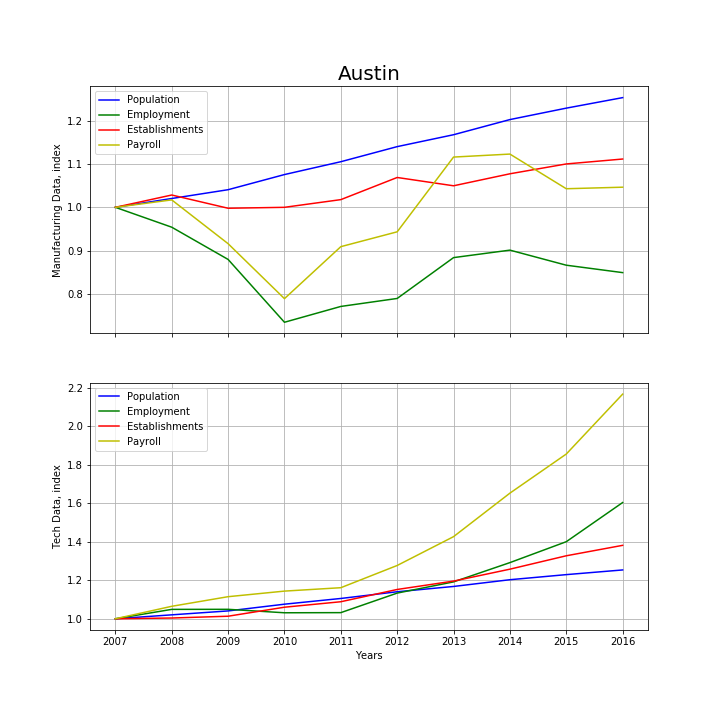
Austin has become one of the most highlighted up and coming cities, as it is attracting a significant amount of start-ups. Interestingly, Austin’s population has been increasing steadily during our dataset timeframe.
Austin's manufacturing sector employment decreased more than 20% between 2007 and 2010, and although it has increased since, in 2016 is still around 15% lower than 2007. Given the population growth, we can conclude that the unemployment rate increased or/and the population found jobs in other sectors. Meanwhile, Austin's manufacturing sector establishments number showed an expansion, with the most growth showed since 2011.Austin's manufacturing sector total payroll decreased significantly, before growing at the fastest rate from all of our manufacturing metrics from 2010 to 2013. Hence, we can conclude that Austin employees’ wages increased significantly.
Austin's tech-related sector employment never contracted; and since 2011, it has increased significantly, leading the sector to have 60% more employment than in 2007. At the same time, tech-related sector’s total payroll increased like in no other analyze city, as it more than double between 2007 and 2016; however, this was partly due to the strong increase in employment in the area.
Comparing both industries, we can see that they behave completely different. Manufacturing’s metrics growth was outpaced by the growth in population, while the tech-related sector metrics had stronger growth than population, with payroll enjoying the strongest growth (meaning that wages have increased significantly).